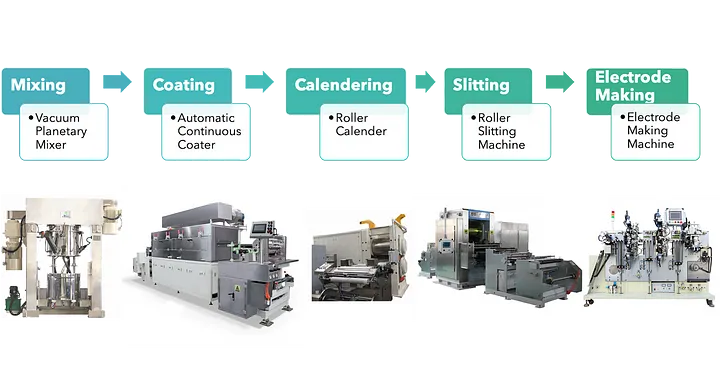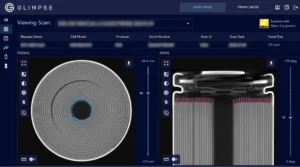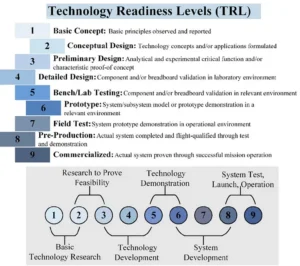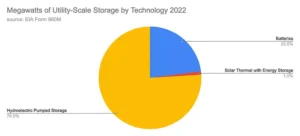- A summary of CATL’s battery production process collected from publicly available sources is presented.
- The 3 main production stages and 14 key processes are outlined and described in this work as an introduction to battery manufacturing.
- CapEx, key process parameters, statistical process control, and other manufacturing concepts are introduced in the context of high throughput battery manufacturing.
In many universities and startup-scale battery R&D environments, the coin cell is the default form factor to evaluate battery systems. However, in applications such as electric vehicles (EV), “cells” are typically manufactured in pouch, prismatic, or cylindrical form factors, which are then assembled into “modules”, “packs”, and then integrated into the EV product. In order to achieve stringent safety and performance requirements, a high level of precision, uniformity, stability, and automation have become necessary in the battery manufacturing process.
This work is a summary of CATL’s battery production process collected from publicly available sources in Chinese media (ref.1,2,3). CATL (Contemporary Amperex Technology Co. Limited) is the largest battery manufacturer in the world, and its battery production process is sophisticated and highly automated. Although much of the details of the manufacturing process are proprietary, we have identified and outlined the 3 main production stages and 14 key processes below from publicly available sources as an introduction to battery manufacturing.
The industrial production of lithium-ion batteries usually involves 50+ individual processes. These processes can be split into three stages: electrode manufacturing, cell fabrication, formation and integration.
Equipment plays a critical role in determining the performance and cost of lithium-ion batteries. Mirroring the three manufacturing stages, equipment can be divided into three categories as well: the 1st stage equipment (Mixer, Coater, Roller Press, Splitting Machine, Filming Machine, Die-cutting Machine, etc.), the 2nd stage equipment (Winding/lamination machine, electrolyte injection machine, packaging equipment), and the 3rd stage equipment (Charging and discharging machines, testing equipment, etc.). The capital cost for each of these three stages represents approximately 40%, 30%, 30% of the cost of the production line.
The 1st stage: electrode manufacturing
The first stage in battery manufacturing is the fabrication of positive and negative electrodes. The main processes involved are: mixing, coating, calendering, slitting, electrode making (including die cutting and tab welding). The equipment used in this stage are: mixer, coating machine, roller press, slitting machine, electrode making machine.
Mixing — Electrode slurry preparation process
To produce an electrode slurry, the raw active materials are combined with solvent, binder, and additives. Slurry mixing is the first step of the electrode manufacturing process, and the process is done separately for cathode and anode materials. The key measurable characteristics of this process (viscosity, density, solid content) will directly affect the quality of the battery and the uniformity of the electrode. In the mixing process, the formulation of raw materials, mixing steps, mixing time are all important parameters.
From the very first step of adding components, the sequence of materials mixing could affect the final electrode’s electrochemical performance. Starting from dry-blending of active materials and conductive carbon, followed by adding solvent could result in lower slurry viscosity, which could enable higher solid content and faster drying, but with trade-off on the rate capability. In contrast, with conductive additives dispersing in binder then incorporate active material will result in a porous conductive framework which subsequently aids the electrochemical performance(ref.).
To achieve a viable electrode slurry, two of the main criteria is if the slurry is stable and processable. Due to interactions between the slurry particles (van der Waals attractions, hydrogen bonding and electrostatic forces) the agglomerations are inevitable. Thus the addition of a dispersant is always needed in the mixing process. Although mixing is a relatively low cost process, the time needed to ensure sufficient slurry dispersion could be a constraint on throughput.
Additionally, in the mixing process the air quality must be strictly controlled to prevent any dust particles or impurities from contaminating the electrode slurry. For cathode slurry preparation in particular, moisture should be well controlled for high-Ni containing cathode materials to prevent corrosion of aluminum foil. Strategies to mitigate the corrosion include pH adjustment, by the addition of phosphoric acid; or interface modifications through applying metal oxide coating on the active material or using carbon primary coating on the current collector.
Coating — Coat and dry the electrode slurry on the current collector foil
Coating (equipment: coater) refers to the process of evenly applying the electrode slurry onto the aluminum (cathode) and copper (anode) metal foils and the drying process that follows. In large scale manufacturing such as in CATL’s process, the coating method used is a tensioned web over slot die with backing roll. In the slot die coater, the slurry is dispersed through a slot gap onto the moving metal foil. Below is an illustration of slot die coating:
Slot-die coating has the advantage of being capable of operating at speeds demanded by industry (up to 300ft/min) and is proficient in achieving even coating thicknesses with precision. Electrode drying is integrated in the continuous coater. During drying, three competing physical processes are happening simultaneously: evaporation of the solvent, diffusion of the binder, and sedimentation of the particles(ref.). In large scale manufacturing, air flotation is applied to assure equal drying to prevent edge curling and leaving an equal amount of residual solvent on both sides. The flotation dryer line could be as long as 70 m, with drying temperatures ranging from RT to 150 °C. Drying temperature and speed could make a big difference on the distribution of each component in the electrode. Coatings dried at 150 °C had 3 times as much binder at the surface layer than on the substrate layer, while a coating dried at RT (room temperature) was more uniform (ref.).
The quality of the coating and drying processes profoundly affects the uniformity, consistency, safety, and cycle life of the manufactured battery. Non-uniformity or defects introduced at this stage on either side of the electrodes will result in poor electrochemical performance of the battery and can cause serious safety issues.
Coating thickness and mass loading should be precisely controlled, and to avoid foil tearing and failure (the main limiting factor in line speed), the coater’s rolling speed and tension must be precisely calibrated. For example, CATL’s current production line utilizes copper foils that are 6um in thickness, 4000 meters in length, and a rolling speed of 80 m/min during the coating process.
Calendering — Rolling press the coated electrodes
Calendering (equipment: roller press calender) compresses and compacts the coated electrode onto the current collector metal foils to improve the energy density of the battery, provide consistent thickness, and to provide further dust and humidity control for the electrode. The roller machine compresses the coated electrode sheet to an even thickness and density.
Calendering is an important process to affect the cell performance by controlling the electrode porosity and tortuosity. Higher calendering pressure applied to electrode reduces thickness of the active layer thus increases the volumetric energy density. While a strong calendaring will also increase the tortuosity of the electrode, affecting the electrode’s electrochemical impedance. The figure below illustrates how electrode’s press density changes with calendering line load.
Slitting and electrode making — Cut the electrode to the required size and prepare the tab
Slitting (equipment: slitting machine) is to longitudinally cut the coated electrode into narrow slices of the required width. Any burring or buckling introduced at this stage will increase the risks of internal shorts that can cause serious safety issues. After slitting, the key process parameters to measure are electrode width, electrode edge flatness, and the presence and characteristics of burrs. One of our previous publications about separator addressed relevant safety strategies as applied to separators.
Electrode making (equipment: electrode making machine) is an integrated process that includes electrode tab cutting, tab welding, protective taping, tab gluing or laser cutting to be prepared for the winding process. The electrode making process can differ significantly depending on the form factor of the product being produced. Tabs refer to the metal conductive body that connects the current collector to the circuit when charging and discharging the battery. The quality of the electrode ear cutting and tab welding can have an impact on the electrical contact property of the cell. The key process parameters to measure are optical inspection, tab peel strength, and electrical resistance testing.
Stay tuned for Part 2 where we will discuss the follow-on manufacturing processes.
Part 2 coming soon…

Katherine (Qianran) He, PhD, is an expert in novel electrode materials design for next generation high energy density LIBs. Katherine is the founder of BatteryStreet and the co-founder of BatteryBits. She also serves on the executive board in MIT CEO Energy Community.

Yen T. Yeh is an engineer at Voltaiq working in the intersection of energy storage and data science. Yen has 10 years of experience working with battery systems, including materials characterization, cell design, prototyping, and battery data analytics. He is a Venture Partner at the Outliers Fund, a 2019 CELI Fellow, and co-hosts the monthly Battery Brunch community to connect energy industry professionals with energy investors, policy makers, and academics.
Interested in publishing in BatteryBits? Apply at this link to become a contributor.
Join our discussion with other battery professionals at the community slack space Battery Street!




